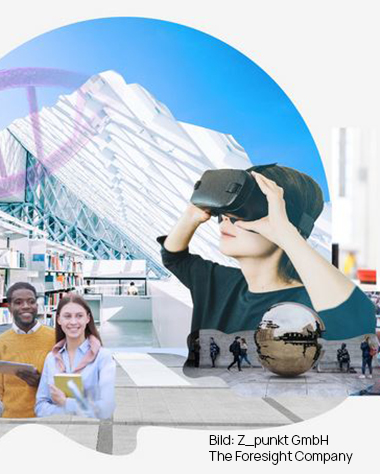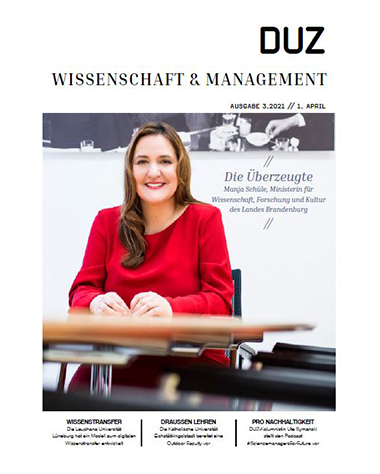No products in the cart.
Archiv

Evaluation of “SCHULWÄRTS!”
01 October 2021
CHE Consult was commissioned by Stiftung Mercator to evaluate the programme “SCHULWÄRTS! – Lehramtspraktika International II” of the Goethe-Institut. The aim of the evaluation was to assess whether the qualitative and quantitative goals set for “SCHULWÄRTS!” were achieved.
“SCHULWÄRTS!” arranges and provides funding for the placement of student teachers at Goethe-Institut partner schools in over 40 countries. Applications are open to teacher training students and futere teachers, who are individually supervised. “SCHULWÄRTS!” was funded in a second funding phase by the German Foreign Officet and Stiftung Mercator. The scholarship holders are to gain international and intercultural experience, develop their teaching personality and be motivated for international educational cooperation.
Together with staff members of Stiftung Mercator and the Goethe-Institut, impact hypotheses were defined at the beginning of the project, which were then tested in the course of the evaluation.
Project Manager Laura Wallor explains: “We investigated to what extent the programme was able to achieve its goals, for example, to what extent teacher training students were encouraged by “SCHULWÄRTS!” to go abroad and whether they experienced an increase in competence and knowledge through their participation in the programme.”
In addition to the qualitative goals, quantitative goals (especially the number of internships supported) were also examined. Another important aspect of the evaluation was the identification of unique selling points and desiderata in the social field of action of “SCHULWÄRTS!”. Methodologically, the evaluation comprised an guided self-evaluation, an online survey of the scholarship holders, in which scholarship holders from the first funding phase were also included for comparison, interviews with scholarship holders, a document analysis of internship reports as well as interviews with experts.
Based on the results of the evaluation, CHE Consult developed proposals and recommendations for the further development of the programme and discussed them together with representatives of Stiftung Mercator and the Goethe-Institut.
Arthur Tarnowski, Project Manager at Stiftung Mercator in the area of Europe in the World, thanked CHE Consult for the evaluation: “Thank you very much for the evaluation of “SCHULWÄRTS!”. The structured and clearly communicated approach at all times made the punctual and high-quality implementation of the evaluation possible.”

Strategic Foresight for Higher Education Development
11 May 2021
An article for the journal “Wissenschaftsmanagement”, written by Julia Klingemann and Jens Engelke with colleagues from Z_punkt, sheds light on how higher education institutions can develop “foresight literacy”.
Higher Education Institutions are very familiar with creating or updating a Higher Education Development Plan (HEP). This plan usually describes the strategic direction and overall institutional plans for five years. But how future-proof are the usual approaches to HEP development?
In their contribution, the authors point out two aspects that are striking. On the one hand, it follows from the five-year perspective that longer and long-term developments in society, the economy, politics and other areas of (global) coexistence can only be moderately taken into account. On the other hand, little consideration is given to opportunities and risks induced outside the institution (“outside-in” perspective), which result from long-term developments in the Higher Education environment.
In response to this observation, the authors suggest initiating the method of strategic foresight for more than five years in order to be able to take into account diverse trends and drivers of developments – local to international – in the planning. This could also promote “changeability”, the positive mental attitude towards change. By discussing possible futures, the authors say, the flexibility and agility of the organisation can be increased.
Strategic foresight is not understood as prognostics. Rather, it is about systematic preparation for possible developments, including those that are “improbable” or “utopian” from today’s perspective. The methodology should enable joint thinking and talking about alternatives as well as the development of options for action.
The spectrum of methods is broad and includes quantitative, expert-based, interactive as well as creative approaches. Frequently used are strategic trend analyses, explorative and normative scenario techniques as well as Delphi surveys, often in combination and adapted to the specific insight interest, the situational application context and the previous experience as well as time resources of the participants.
The article presents a six-phase model for strategic foresight. It describes how leaders of Higher Education Institutions can take the first steps and dive into a foresight pilot phase.

Making a positive contribution to the future
05 May 2021
In a recent article for DUZ Wissenschaft & Management, Jens Engelke (CHE Consult) and Mathias Falkenstein (XOLAS) argue: Higher Education Institutions can open up new opportunities if they orient themselves towards students’ sustainability expectations.
In a study conducted by the “Positive Impact Rating Association”, nearly 3,000 students from business schools around the world were surveyed. The results were presented during the World Economic Forum in Davos in January 2020. They show: The students surveyed expect their Higher Education Institutions to make a positive contribution to a sustainable social transformation process. On the other hand, non-university activities are expected, such as intensified cooperation with primarily local actors from society and business.
In their article, the authors explain how Higher Education Institutions can meet such expectations of students and which mistakes should be avoided. It is important not to misuse the topic of sustainability in the sense of superficial marketing interests. According to the authors, “prospective students can very well determine […] with what stringency and consistency a Higher Education Institution operationalises its further development. Key players in society also expect a university to offer solutions to societal challenges and thus to provide added value for society.”
University management in particular is called upon to provide orientation through the implementation of strategic guidelines. One way in which this can be achieved is through Positive Impact Development. The approach supports the Higher Education Institution in identifying the many facets of sustainability – from resource-efficient building use to third mission – and subsequently developing them in a concrete and measurable way.
The authors further argue that by anticipating and, if possible, fulfilling students’ (sustainability) expectations, attractiveness and retention can be generated. As a result, the probability of attracting additional students increases. In addition, alumni management could also be promoted considerably.
The original articel was published in: DUZ Wissenschaft & Management, 03/2021, www.duz.de
